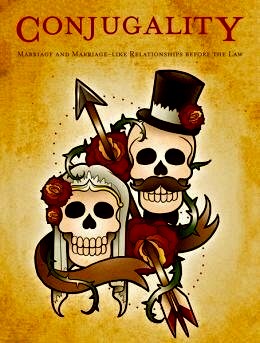The Requirements of a Valid Inter Vivos Transfer to a Trust
The decision Mordo v Nitting 2006 BCSC 1761 is a primary source on many aspects relating to trusts. Morodo was suing to set aside an alter ego trust settled by his mother in favour of his sister, and utilized just about every legal argument on the subject that could have been made, including this one.
[263] To form a valid inter vivos trust, there must be a valid act of transfer to a clearly identified trustee.
[264] It is clear from the Trust Indenture that Mr. Wilson was to be the original Trustee. Further, a Form A transferring the Warehouse to Mr. Wilson “as Trustee” was executed by Eida on September 5, 2000. Accordingly, in this case, the identity of the Trustee was clear.
[265] However, the creation of a valid inter vivos trust requires a valid act of transfer to that clearly
identified trustee. In this case, was it enough for Eida to complete the Form A and hand it to Mr. Wilson, or was it also necessary to register the Form A before the Trust came into existence? As noted, Mr. Wilson did not register the Form A until after Eida’s death for property tax reasons.
Legal authorities concerning the requirements for a valid transfer
[266] The rule as to the formation of a valid trust was stated in Milroy v. Lord (1862), 45 E.R. 1184 (C.A.) [Milroy]:
[l]n order to render a voluntary settlement valid and effectual, the settler must have done everything which, according to the nature of the property comprised in the settlement, was necessary to be done in order to transfer the property and render the settlement binding upon him (Milroy at 1189).
[267] In Milroy, the trustee was given share certificates and a power of attorney under which he
could transfer the shares into his name. The shares were such that legal title did not pass until the new owner’s name was entered in the share register; that was not done until after the settlor’s death. The court concluded it was not sufficient that the trustee was capable of transferring the shares. The transaction was incomplete without the actual transfer having occurred. The court would not compel the agent of the settlor to complete the transfer because it could not compel the settlor to complete the transfer:
Equity could not, I think, decree the agent of the settlor to make the transfer, unless it could decree the settlor himself to do so, and it is plain that no such decree could have been made against the settlor (Milroy at 1190).
[268] The court in Milroy refused to hold that the settlor held the legal title on trust for the trustee:
[T]here does not appear to me to be any sufficient ground to warrant us in holding that the settlor himself became a trustee of these bank shares for the purposes of this settlement (Milroy at 1190).
[269] In the case of Re Rose, [1952] Ch. 499, [1952] 1 All E.R. 1217 (C.A.) [Re Rose] the English
Court of Appeal distinguished Milroy and found a valid trust. In Re Rose, the registration of the shares could not be completed until the board of directors approved the transfer. The court concluded that the settlor had done all that he could by completing the documentation and forwarding it to the board for approval, and accordingly held that legal title passed before registration, when the settlor gave up possession of the documents.
[270] In Fenton v. Whittier (1977), 26 N.S.R. (2d) 662 at paras. 86 to 96; 40 A.P.R. 662 (S.C.)
[Fenton], the Nova Scotia Supreme Court, considering Re Rose, concluded there was no inter vivos gift of shares. Although the donor had completed the share transfer forms, she kept them in a safety deposit box until her death because she wanted the benefit of the dividends during her lifetime. The court concluded that the donor intended the gift to take effect only upon her death.
[271] In Pennington v. Waine, [2002] 1 W.L.R. 2075, [2002] EWCA Civ 1587 an aunt intended to
make a gift of shares to her nephew. However, the share register was not updated with the name of the new owner and the donor kept the completed share transfer forms rather than handing them to her nephew. On a strict application of the principle in Re Rose, there was no valid inter vivos gift. However, the English Court of Appeal held that it would have been unconscionable for the executors of the giftor to refuse to hand over the share certificates, and found that the gift was valid. In so concluding, the court relaxed the rule in Milroy and imposed a trust on the settlor such that she held the legal title to the shares in trust for the trustee until the transfer of ownership was completed.
[272] In Bank Leu AG v. Gaming Lottery Corp. (2003), 231 D.L.R. (4th) 251 at para. 56 (Ont.
C.A.) Weiler J.A. (for the court), referring to Pennington, affirmed the principle in Re Rose that a transfer may be valid notwithstanding that the transferee must perform further acts to complete the transfer.
[273] The foregoing cases deal with the transfer of shares. As noted in Milroy, what constitutes “everything necessary” to achieve an effective transfer depends on the nature of the property being settled. In the case of real property, what is “everything necessary” to effect a transfer?
[274] In Mascall v. Mascall (1989), 50 P. & C.R. 119 (C.A.) the plaintiff father applied for a
declaration that a transfer of real property to his son, the defendant, was invalid. The plaintiff had completed the land transfer forms and handed them to the defendant, anticipating that any further steps concerning the forms would be taken by the defendant. At the time of the plaintiffs death, the defendant had not yet registered the forms. The English Court of Appeal, applying Re Rose, found that the plaintiff had done all that he could to complete the transfer and therefore the transfer was complete. In the result, the son was the holder of legal title despite registration having not yet taken place.
[275] The acts necessary to affect a valid transfer of land is more a question of the legislation governing land transfers than a matter of trust law: The Australian Law Journal, [1968] A.L.J. Vol. 42 at 227. Section 20 of the Land Title Act, R.S.B.C. 1996, c. 250 [Land Title Acf\ deals with the transfer of land in British Columbia:
20. Except as against the person making it, an instrument purporting to transfer, charge, deal with or affect land or an estate or interest in land does not operate to pass an estate or interest, either at law or in equity, in the land unless the instrument is registered in compliance with this Act.
[Emphasis added]
[276] In Davidson v. Davidson, [1946] 2 D.L.R. 289 (S.C.C), affg [1945] 2 W.W.R. 576 (B.C.C.A),
the Supreme Court of Canada, considering language of the Land Title Act almost identical to that now contained in s. 20, held that an unregistered transfer of land took effect on the day the transfer was executed and not on the day it was registered. More recently, in Chung Estate v. Chan (1995), 4 B.C.LR. (3d) 370 (S.C.) [Chung], affd (1995), 13 B.C.LR. (3d) 157 (C.A.) the court held that if the transferor has properly completed a freehold transfer form, the opening words of s. 20 – “except as against the person making it” – apply such that the form may be registered after the transferor’s death to effect a transfer of the property.
[277] Chung was distinguished in the case of Kovacs v. Tuteckyj (2000), 147 Man. R. (2d) 161,
2000 MBQB 104 [Kovacs]. In Kovacs, the transferor had executed the transfer form and given it to another, but instructed that it not be registered until after he had consulted with his solicitor. The court held that the intention of the transferor at the time he handed over the transfer form was relevant. The court drew the inference from the circumstances that the transferor had not done everything necessary to complete the transfer and, as such, the transfer was not complete.
[278] As the foregoing case law indicates, the intention of the transferor is crucial. If the transferor intends to transfer the property, the transfer will be complete when the transferor has relinquished control of the property and put the transferee in a position to complete the transfer. The importance of control was discussed in Re Evans, Royal Trust Co. v. Lloyd’s Bank Ltd. (1956), 7 D.L.R. (2d) 445 (B.C.S.C.) [Re Evans]. The Court, citing Austin W. Scott, The Law of Trusts, 1st ed. (Boston: Little, Brown and Company, 1939) at 225 [Scott] said the following:
A conveyance, whether absolute or in trust, is ineffective if the transferor does not
surrender control of the property…. A conveyance in trust is incomplete unless the settlor has passed the title to the property to the trustee by delivery of the subject matter of the trust or of an instrument of transfer. On the other hand, if the conveyance in trust is completed by such delivery, the trust is not incomplete merely because the settlor reserves power to revoke or to alter the trust. There is a sufficient surrender of control over the property if the settlor transfers the title to it to the trustee, even though he reserves power to undo what he had done. The surrender of control is sufficient even though the settlor reserves power to reassume the control (Re Evans at 451 – 452).
[279] Alex argued that Eida did not effectively transfer the property, or relinquish control of it,
because Mr. Wilson did not register the transfer form. As such, said Alex, Eida had the unrestricted right to deal with the property. In particular, Alex relied on the following words from Re Pfrimmer Estate [1936], 2 D.L.R. 460 at para. 10 (Man C.A.) [Re Pfrimmer Estate] citing Malim v. Keighley (1794), 30 E.R.659at660:
I will lay down the rule as broad as this; wherever any person gives property, and points out the object, the property, and the way in which it shall go, that does create a trust, unless he shews clearly, that his desire expressed is to be controlled by the party; and that he shall have an option to defeat it.
– See more at: http://www.disinherited.com/blog/requirements-valid-inter-vivos-transfer-trust#sthash.5VPAlcyW.dpuf



 Trevor Todd and Jackson Todd have over 60 years experience in handling wills variation disputes
Trevor Todd and Jackson Todd have over 60 years experience in handling wills variation disputes


